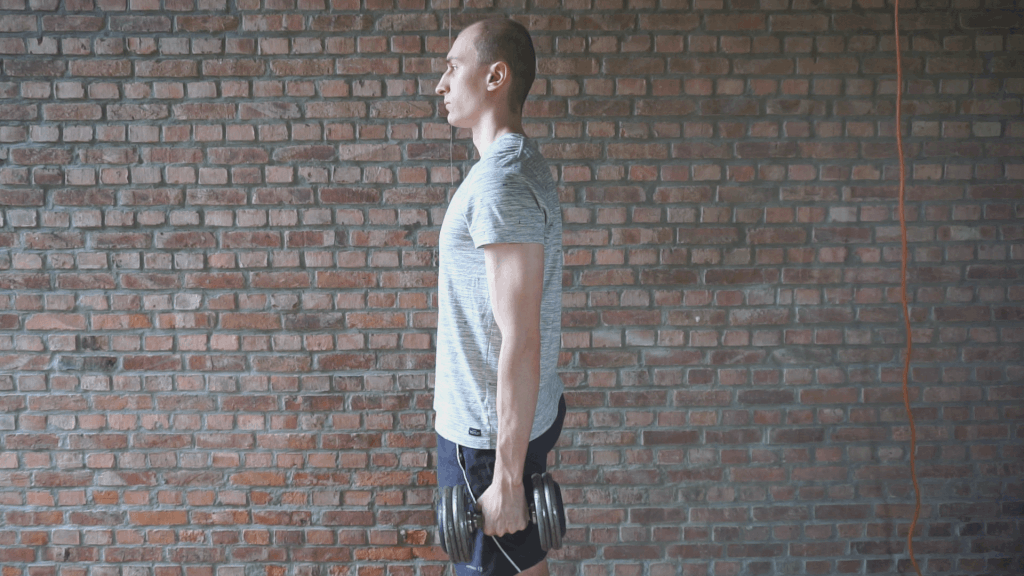There are surprisingly many ways to work your upper arms. Find out what muscles hammer curls work and how they compare to regular bicep curls.
Hammer curls work your biceps brachii (main upper arm muscle), biceps brachialis (deeper and lower upper arm muscle), and brachioradialis (forearm muscle).
Regular bicep curls work these same muscles but by turning your wrists, your biceps brachii is able to exert less force in hammer curls.
In turn, hammer curls will focus more on the biceps brachialis and brachioradialis than regular bicep curls.
On the flip side, regular bicep curls will be better for working the biceps brachii.
This different ratio of muscle engagement is not necessarily better or worse for everyone.
Whether you prefer hammer curls, regular bicep curls, or other curls depends on your situation and training goals.

Muscles worked with hammer curls
Hammer curls are an exercise with a relatively isolated focus but they do still work a few different muscles.
More specifically, they work the biceps brachii (commonly just called biceps), the biceps brachialis muscles which lie deeper in the upper arm, and the brachioradialis between your upper and lower arms.
If you just want to grow your biceps it is likely smarter to stick to regular bicep curls.
The slightly different muscle engagement compared to hammer curl alternatives like the regular bicep curl is not necessarily better or worse. Your training goals will influence your choice.
Do hammer curls work the biceps brachii?
The biceps brachii is the most visible muscle in the front part of your upper arm. When people talk about their biceps, this is typically the one they have in mind.
By turning your wrists in hammer curls, you do work your biceps brachii to a slightly smaller extent.
However, this muscle will still be one of the main parts responsible for moving the weight.
Do hammer curls work the long head aka bicep peak?
Something to note is that the biceps brachii has two muscle heads or in simpler words, two parts.
There is the long bicep muscle head, also known as the bicep peak, on the outer side of your arm.
In the inner parts of your arms, there is the short bicep muscle head.
Hammer curls will likely work the outer part aka the long head just a bit more than the short head. Even so, both muscle heads will still have to exert a lot of effort.
Do hammer curls work forearms?
There is a muscle called the brachioradialis that runs along your forearms and connects to your upper arm.
By rotating your wrists, hammer curls work this brachioradialis forearm muscle a good amount more.
Do hammer curls work biceps or forearms more?
The biceps brachii will typically still move more weight than the brachioradialis forearm muscles when doing hammer curls.
That being said, depending on your personal strength in both of these muscles, one or the other could fatigue first when doing hammer curls.
Biceps brachialis
Your upper arms also have the biceps brachialis muscles which are located lower and deeper than the biceps brachii.
Because of the wrist position of hammer curls, you work the brachialis just a bit more than a regular bicep curl.
If you like working this muscle you can rotate your wrists even further to do a reverse curl.
Do bicep curls and hammer curls work different muscles?
You may wonder whether regular bicep curls or hammer curls would align best with your training goals.
From a high-level view, you can say that both bicep curls and hammer curls work the same biceps brachii, biceps brachialis, and brachioradialis.
However, these exercises work the muscles in different ratios.
More specifically, hammer curls will work the brachialis and brachioradialis more than bicep curls. Due to the different angles of your forearms, the biceps brachii are able to exert less force.
That also means regular bicep curls will generally be better for working the biceps brachii muscles than hammer curls.
